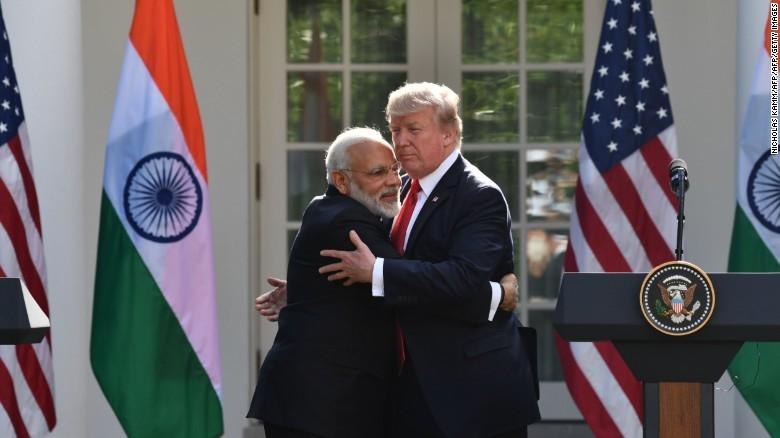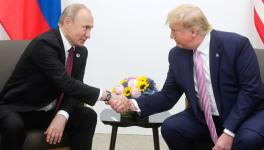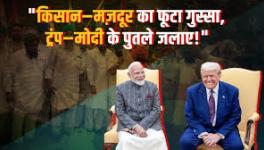Indo-US Relations: India Does Not Need White Elephants

In pursuit of ‘once-in-a-generation’ opportunity to find “common ground” with India, US National Security Advisor John Bolton told his Indian counterpart Ajit Doval that the US is committed to strategic partnership with India, and is desirous of holding a ‘2+2’ meeting soon between the US secretary of state and secretary of defense, and their Indian equivalents – the defense and foreign affairs ministers. Moreover, within days of the ‘informal summit’ between China and India in Wuhan, officials from India and the US met in New Delhi on May 3 and 4, to “seriously re-examine” the two foundational agreements the US has been pushing India to sign namely: Communication Compatibility and Security Arrangement (COMCASA) and Basic Exchange and Cooperation Agreement (BECA). The two sides will do a “cost-benefit analysis to fully understand the technical implications involved”. [Rajat Pandit: “Govt reviews pacts for US def tech”; Times of India] The Congress-led UPA government had refused to sign these pacts, citing serious problems, which would jeopardise India’s strategic interest.
The US has been pushing the Indian government to sign these two pacts. It claims that these are the “technology enablers” to transfer hi-tech avionics, encrypted communications and electronic systems to India and ensure secrecy of its C4ISR (Command, control, communication, computer, intelligence, surveillance and reconnaissance) system so that it does not fall into the hands of any US adversary such as Russia. What they do not say is that these pacts are intrusive, and will bring India under US’s intellectual property right laws and rules. These will enable the US to keep track of Indian warships and aircrafts. In the name of compatibility and control, these pacts will force India to be in a dependent relationship with the US. This will simultaneously whittle down India’s military trade relations with Russia. The pro-US corporate lobbies in India have been arguing for long in favour of India’s alliance with the US – as a counter to China – and have been advocating for India to sign these two pacts. These agreements will enable India to get the latest and most hi-tech weapons from the US, such as unmanned aerial vehicles (UAV) like MQ-Reaper or Predator B drones that can fire missiles on ‘enemy’ target and return for refueling and rearming. Currently, India is engaged in negotiating purchase of hi-altitude, long endurance drones – 22 Sea Guardian, which can be airborne for 27 hours at an approximate cost of $2bn.
All this is happening against the backdrop of the US law ‘Countering America’s Adversaries Through Sanctions Act’ (CAATSA), which mainly targets Russia, and is used to deter countries from buying Russian military goods; thereby boosting the US’s arms sales and creating more jobs in the US. India has already begun to reduce its military purchase from Russia, and has increased military imports from the US in the past decade.
The decision to consider COMCASA and BECA comes at a time when Sino-India summit has brought the temperature down along the Sino-India Line of Actual Control (LAC). The Indian Army headquarter has ordered field formations to strictly follow the protocol laid down on April 11, 2005, which calls for “self-restraint (…) and avoid escalation of the situation”. Apparently, under the Narendra Modi government, field commanders were given the autonomy to take decisions on the spot, which saw increase in fisticuffs, stone pelting and other ‘rowdy behaviour’ along the LAC, which could have turned bloody. In other words, whatever folklore is being promoted by corporate media in India about the ‘Doklam face-off’, it was contrary to the protocol. The four steps laid down in that protocol are: to cease activities and not advance further and return to their base; inform their respective headquarters, enter into consultations through border meetings or other diplomatic channels; neither use force nor threaten its use in any face-to-face situation; and finally to treat each other with courtesy and refrain from provocative action. If the protocol is followed scrupulously, it would help to end the ‘face-offs’, and lower threat perception, since chances of flare-ups are reduced.
In other words, India’s longstanding military ties and, in particular, nature of such ties where Soviet Union offered India deals, which no one else could match, and lowering of tensions and rhetoric vis a vis China would mean that there is no convincing reason to get closer to the US, militarily. Indeed, India has been conducting quadrilateral exercises with the US, Japan and Australia as well has been engaged in Malabar naval exercises for 20 years without such pacts. So, now if ‘interoperability’ is being pushed by the US, it is because this would make India buy mostly the US-made military goods, which can meet the requirement for ‘interoperability’. Think also of this fact that India has used Russian warships and aircrafts in military exercises with the US, without compromising on secrecy and security of Russian technology. And all these years, India’s Russian military arsenal did not come in the way of ‘interoperability’. If they are doing it now, it is because the US administration perceives the Modi government to be malleable to the US’s ‘persuasion’, to sign these pacts although there is no pressing argument to hitch India’s wagons with the US.
Besides, it is worth keeping in mind what US Original Equipment Manufacturers expect from India. Boeing, having tied up with Hindustan Aeronautics Ltd and Mahindra Group, pointed to what needs to be done to bring foreign investments into India’s military sector as a part of the Modi government’s ‘Make in India’ pitch. It is “actual orders”, which matter to Boeing, because “it’s too much risk to invest in capacity”, according to the president of Boeing India. “The best way for the government to catalyse investment is to make orders”. So it is not a one-time order, but repeat orders over a long period, which are required to lure investments. Needless to add, such long term orders will tie up resources for a decade or two. Then room for foreign policy maneuverability and positive spin-offs from diplomatic rapprochement with adversaries will be curtailed, and change in threat perceptions will have no lowering of military expenditure. So, if relations improve, for example with China, there will be no change in Indian military’s war preparations!
Besides, Boeing officials become expansive about claiming that they would be providing India “certain technology and platforms that we have offered to no other country in the world”, but turn coy when it comes to admitting in public that the US OEMs will not part with control over proprietary technology. In other words, for all the hoopla over ‘Public Private” military venture, HAL will remain a junior partner to Boeing OEM. Indeed, in reality, Indian public sector HAL will become appendage of a private US OEM. So a modern fighter jet can be manufactured in India, but under the US’s watch.
Although COMCASA and BECA are being pushed to enable US to sell military equipment to India, it is actually meant to draw India closer to the US’s imperial interests. Anything, which the US hard sells, putting its best foot forward, requires close scrutiny because the US administration have a propensity to control and dictate to the countries they regard as their un-equals. Good sense and enlightened self-interest demand India to lower the ambition in accordance with country’s capability and focus, instead, on uplifting Indian people by investing in them, rather than in expensive military gadgets, which have a nasty habit of becoming ‘white elephants’, if not a Trojan horse.
Get the latest reports & analysis with people's perspective on Protests, movements & deep analytical videos, discussions of the current affairs in your Telegram app. Subscribe to NewsClick's Telegram channel & get Real-Time updates on stories, as they get published on our website.
























